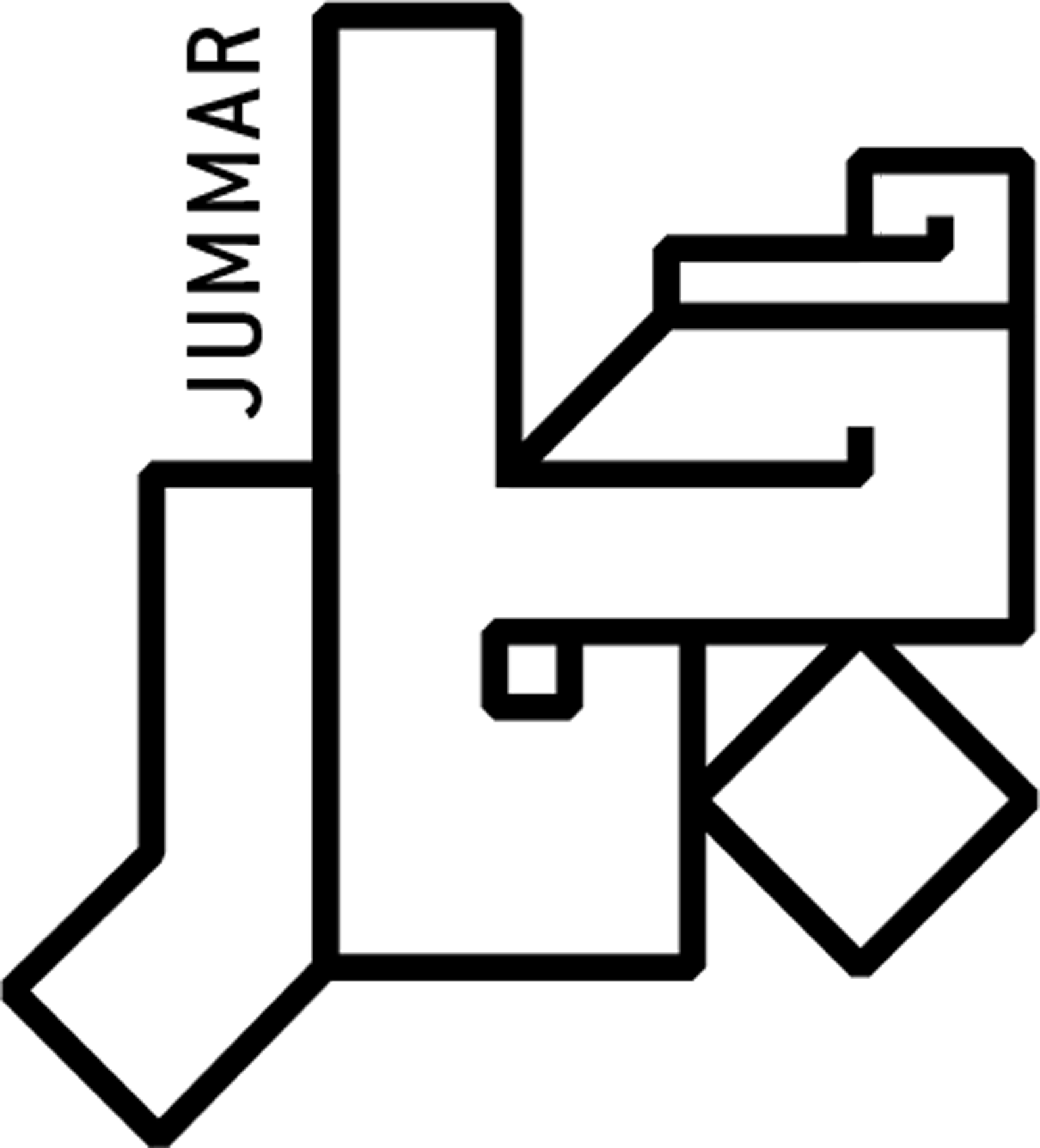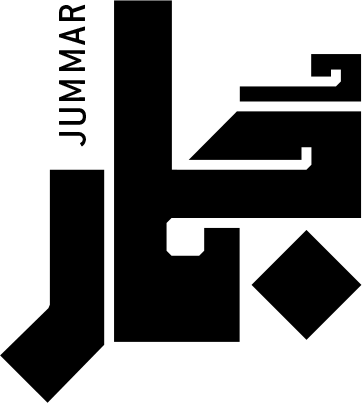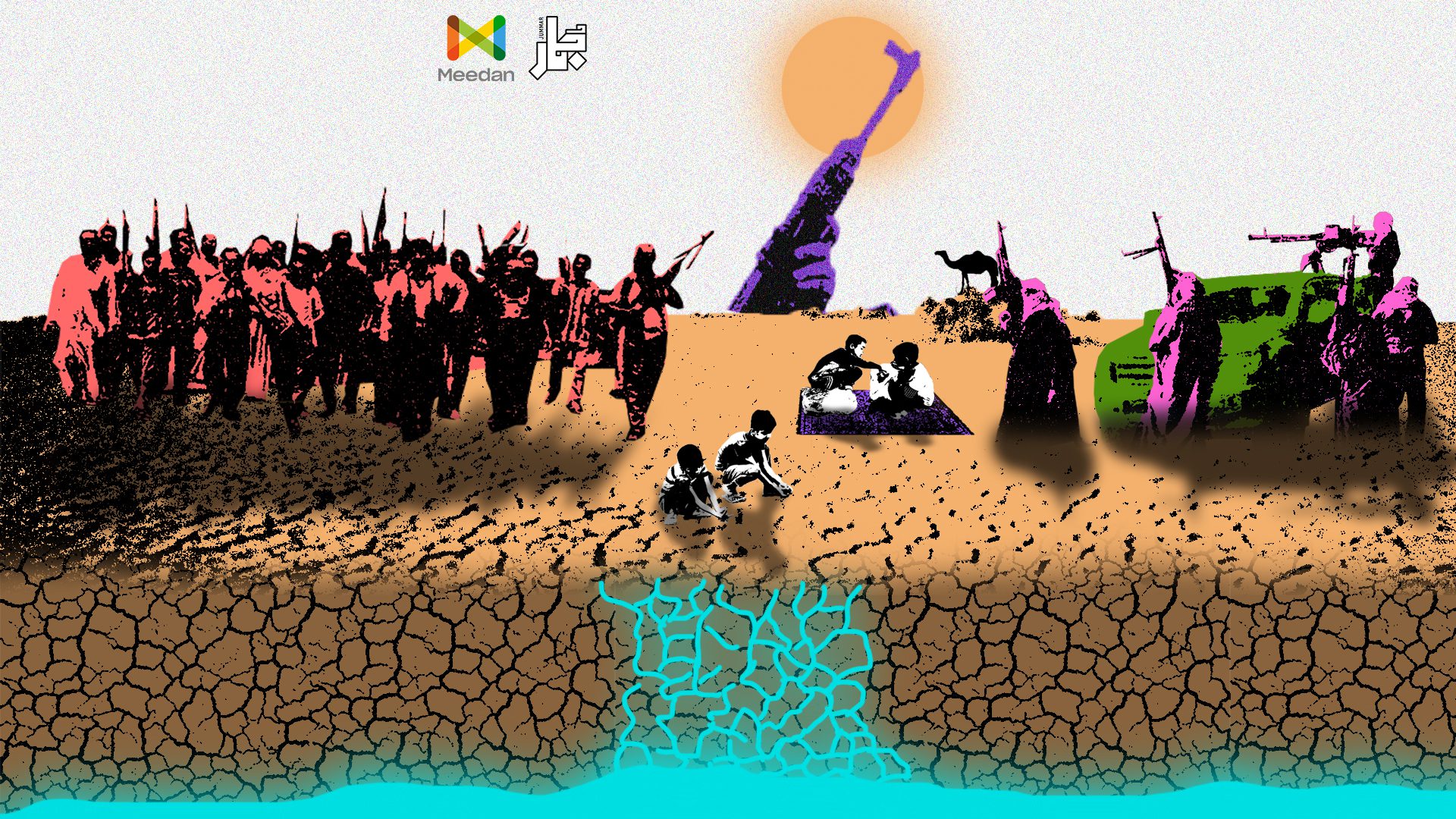“There is little water left”: Tribes of Al-Muthanna Fight over Groundwater
16 Jul 2023
Water scarcity in Al-Muthanna has forced the residents to cultivate the desert by exploiting groundwater, but the story of the search for water is broader with countless twists and turns. This is the story of the underground “secret” in Al-Muthanna that may soon vanish.
In March 2023, shots rang out in the desert of Al-Muthanna in a fight between two tribes over land containing groundwater. One person was killed, and five others were injured. The dispute was resolved after the killer’s family paid a Diyah [Arabic for blood money] of 130 million dinars, which equals around ninety-thousand dollars. However, the roots of the dispute remain.
Last February, Al-Muthanna police were attacked with stones by members of the tribe while guarding a blight-violation removal campaign on Al-Rumaitha River, east of the governorate. The attack led to more than ten security personnel being injured.
These conflicts clearly indicate the deepening water crisis in Iraq and its impact on civil peace. However, the crisis of Al-Muthanna is further accentuated as the governorate suffers acutely from very scarce water resources, which has made its authorities and people resort to groundwater wells. Dozens of wells are being drilled every month, and the authorities’ excavators are racing with the shovels of individuals to reach the precious underground resource.
Geographical statistics indicate that the groundwater storage in Al-Muthanna desert exceeds sixteen billion cubic metres, equivalent to Shatt Al-Arab’s water drainage.

Water-recovery irrigation or displacement
While searching for water, many tribes get involved in armed conflicts.
Lands that depend on groundwater are now many times more than those irrigated by surface water. The number of dunams (1000 square metres) of land irrigated by surface water only amount to sixty-six thousand, while about 291 thousand dunums rely on the desert’s groundwater.

The size of cultivated land in Al-Muthanna Governorate in 2023 is around 357 thousand dunums. “We cultivated only 60,000 dunums in 2022, but thanks to groundwater, the number jumped to 360,000 dunums this year”, the Head of Al-Muthanna Agriculture Directorate, Amer Jabbar, told Jummar.
Extracted groundwater was used to cultivate 300,000 dunums of land and fill it with crops. However, other land remains degraded, and its people face the threat of displacement.
Farmland left to its fate
The Directorate of Agriculture determines land in the east and north of Al-Muthanna most affected by the water crisis. Farmers of these areas were denied water-recovery irrigation, a method by which arable land is flooded with water when it lies close to rivers or their tributaries branches.
In the districts near Al-Rumaitha River, such as Al-Najmi, Al-Warka, Al-Rumaitha, and Nahiyah Al-Sawir, people experienced the drying up of their river. Some were forced to abandon their lands and homes to search for a new water-secure location. “There are 4,334 farmers in different regions, and most of them have been affected by the reduction of the agricultural plan”, according to Amer Jabbar, Head of Al-Muthanna Agriculture Directorate.

Iraqi provinces reduce their agricultural plans each year as the water shortage worsens. Al-Muthanna Agriculture Directorate attributes water scarcity to the lack of water imports from the neighbouring province of Diwaniyah, especially on Al-Rumaitha and the Euphrates riverbanks, the main water sources for Al-Muthanna’s agriculture.
“Transgressions are committed on the river as it transits through Diwaniyah from Babel. We sent several official letters requesting the setting up of a monitoring point between Al-Muthanna and Diwaniyah to prevent transgressions, but to little avail”, said Haidar Abdul-Kazim, Officer of the central water projects in Al-Muthanna.

Water scarcity forced the governorate to stop cultivating crops for an entire season, as happened last summer when the planting of amber rice stopped in areas of Al-Warkaa district, which amounts to ten thousand dunums.
Civil peace is threatened
The local government in Al-Muthanna expects more tribal conflicts to take place over water. “Clashes erupted between the tribes and security forces during the previous agricultural season in the Aal Shweija region in Al-Warkaa district”, said Abdul-Wahhab Al-Yasiri, Advisor to Al-Muthanna governor for agricultural affairs and water resources.
In October 2022, members of the Aal Shweija tribe attacked security forces and water resources department employees while they were trying to prevent transgressions on the rivers in Al-Warkaa district.



Water scarcity in Al-Muthanna prompted the local authorities to turn to the desert and cultivate it using groundwater, which many opposed due to excessive water depletion. Groundwater has been used to cultivate over 300,000 dunums by irrigation, raising fears of excessive water depletion and creating a burden on the region’s reserves for future generations.
There are conflicting numbers regarding groundwater reserves between the governorate’s agricultural and water departments. However, neither of them has accurate official statistics on the matter.
Specialised authorities face challenges in determining the desert’s groundwater reserves, as they do not have data for the depleted groundwater. Generally, they have recorded significant depletion and indications of a decrease in groundwater levels in recent years in areas called “areas of depletion”, especially in Al-Samawah Saltern and other lands using irrigation in the desert.
On the other hand, there are increasing demands to support farmers by granting them particular loans to buy modern irrigation machines to cultivate their land and control water depletion. According to the local agricultural authorities, this is due to the high prices of these machines, such as sprinklers, with costs exceeding sixty million Iraqi dinars (around forty-two thousand dollars).
One well after another
Naturally, drought forces people to find different ways to access water. The most popular way in Al-Muthanna is digging wells. Last year, the Groundwater Authority in Al-Muthanna registered more than 800 unlicensed drilled wells. These wells are believed to delve below the level of groundwater, as they are not regulated by the land’s water requirements and are being dug to great depths, which damages the land. However, the authority granted exemptions to the wells’ owners and licensed the wells without backfilling them.
Environmental officials expect the number of wells in the desert to be around three thousand, distributed horizontally, on the groundwater storage line of the Dammam aquifer, which is shared between Saudi Arabia and Iraq and feeds the channels of Sawa Lake.



The situation changed after 2003, when transgressors began drilling desert land, draining its water, and violating the desert laws. Before 2003, digging was prohibited unless it was for the public benefit of nomadic Bedouins or specific farmers who obtained official licences based on longitudinal geological studies of the soil, groundwater storage, layers of the earth, depth calculations, and the amount of water needed for the desired purpose.
According to Abdul-Amir Al-Aboudi, a researcher in the History and Ecology of Al-Muthanna Desert, the first official drilling of groundwater wells began in 1953 by a Yugoslav company contracted by the Iraqi government. These wells were named the “public benefit wells” and were drilled for sheep farmers and Bedouins. There were 120 wells, mostly close to their pastures, and the distance between each one ranged from fifteen to twenty kilometres, that is the distance Bedouins travel on foot between each trip, after which they camp and rest. Another thirty-five wells were dug near the borders, exclusively for the police and border guards, and they had specialised employees to operate and repair them if damaged.
In 2013, the government attempted to repeat the initiative and drilled fifty-four wells for the public good to settle nomadic Bedouins. Still, it failed because the wells’ employees abandoned their work as they had no special department to pay their dues, and their salaries were discontinued, forcing them to leave. The government then pulled out the well pumps to avoid them being stolen or buried.
Al-Aboudi says that uncontrolled arbitrary drilling of wells occurred in the desert after 2003, which caused adverse environmental repercussions from the penetration of geological strata, such as environmental pollution, waste of the desert’s water reserves, burning of soil cavities, and freshwater mixing with sulphurous water. This is because every geological layer contains a certain quality of water, especially in desert land.



The unique lake is drying up
For thousands of years, the Sawa Lake in Al-Muthanna desert was unique as it did not get its water from rivers but depended on groundwater through a spring in the lakebed. However, after the uncontrolled drilling of wells nearby, the lake diminished, and its water level decreased to complete dryness, except for its spring. The remaining spring allowed the Marine Science Centre team of the University of Basra and other teams from Al-Muthanna and Baghdad to conduct tests on its water and rocks. The tests proved the lake is connected to the Dammam aquifer, as its sulphurous water matched that of the aquifer.
“The Sawa Lake has dried up due to the depletion of water by Al-Samawah Saltern, a salt extraction plant and nearby cement plants, in addition to the unauthorised horizontal expansion of agricultural land in the desert and its impact on groundwater”, said Dr Sophia Jabbar, Director of Al-Badia [Arabic for desert] and Sawa Lake Studies Centre at Al-Muthanna University. The Environment Directorate of Al-Muthanna confirmed Jabbar’s evaluation.
The drying up of Sawa Lake raised the alarm about the future of water in the governorate, which suffers from a massive shortage of surface water. Studies corroborated, that the future of groundwater would be similar to that of surface water if it continues to be arbitrarily drained.
Jabbar stresses the need to regulate agricultural investment through laws that consider environmental impacts in order to preserve groundwater.
Al-Samawah Saltern, which is close to Sawa Lake, possesses more than nineteen wells of its own, and it is one of the main reasons behind the lake drying up as groundwater does not reach its spring.
Distortions and tremors
Sawa Lake is a resting station for birds migrating from east to west, and home to a rare diversity of exotic fish that cannot be cooked as they melt rapidly. Meanwhile, Al-Muthanna desert is a fertile environment for various rare plants, most of which have become extinct during the last twenty years due to human intervention, water depletion, the neglect of public benefit wells that provide the land with water, climate change, and the lack of rainfall in the area.
Dr Latif Kamel, Head of the Geography Department at Al-Muthanna University, says that some studies attributed the drying up of Sawa Lake to industrial and agricultural activities. “The biggest problem is that the economic mindset in the governorate aspires to make profit without sustainable development”, Kamel told Jummar.
The excessive depletion of the desert’s water affects the volume of groundwater and the internal tectonic environment, which can cause distortions in the earth’s formation when exposed to imbalances. Kamel expects that continuing excessive drilling at great depths will expose the region to frequent earthquakes in the future.
Sawa Lake’s inclusion in the International Ramsar Convention did not save its biodiversity or preserve it as a resting station for migratory birds. Youssef Sawadi, Director of the Environment Department in Al-Muthanna, talks about the lake losing its biological diversity, “The lake has lost many of its creatures, especially the small fish called mosquitofish and walleye. These fish are only found in Sawa Lake, and have now disappeared because of drought”, Sawadi told Jummar.
The water harvesting project
The desert of Al-Muthanna can be subject to heavy waves of torrential downpours annually due to its low geographical position whereby it collects rainwater from Najaf, the Saudi border, Basra, Jordan, and Syria. However, this water floods towards the rivers and evaporates without being used.
This year, the governorate witnessed the most severe wave of torrential rain, which swept over the main strategic road for oil transport vehicles. Meanwhile, the governorate’s water authority steered these floods towards Shatt Al-Atshan (a tributary of the Euphrates River) to curb them. The tributary then dried up in early May.



In 2018, the governorate’s Directorate of Planning presented a special project to utilise rain and flood water in the desert. The project was called the Water Harvesting Project, but it remained merely ink on paper and was not implemented by the relevant authorities.
Engineer Qabil Hammoud, Planning Director of Al-Muthanna, says that the project includes forty-three surface dams to utilise flood water and reserve it through earthen, stone, or concrete dams in locations where water is to be collected and transferred underground to help protect against climate change and drought.
The Directorate of Planning in Al-Muthanna holds the Ministry of Water Resources responsible for neither implementing the project to utilise flood waters in facing the major drought crisis in the governorate, nor providing water reservoirs in those areas, especially with farmers cultivating the desert, which decreases groundwater reserves significantly.
“Despite our sending of many letters, the Ministry of Water Resources showed indifference and failed in the water harvesting file”, Hammoud told Jummar.
Mass migration
Many farmers in Al-Muthanna say that agriculture is no longer feasible for them as they are prevented from cultivating their land due to the drought crisis. This has turned it into undeveloped farmland that generates no income, forcing most farmers to convert their land into residential areas.
Meanwhile, the local government confirms that residents of the northeastern regions of Al-Muthanna, who make up sixty per cent of the governorate’s total population, have stopped farming. However, it does not have accurate statistics on the number of families that have migrated and left their agricultural land.



Lazim Huwaidi Al-Toubi, a farmer and elder of the Aal Touba tribe, is one of the thousands in Al-Muthanna who have been deprived of cultivating their land due to water scarcity. Al-Toubi owns 4,000 dunums that used to provide a rich harvest of vegetables but have ceased to be cultivated in the last three years because of what he describes as the “unfair decision” of preventing agriculture.
“From the Aal Ghanim tribe’s borders to that of the Al-Jawaber tribe, agriculture has ceased. We are stopped whenever we intend to farm due to the lack of water”, Al-Toubi told Jummar.
This reality has forced about 500 families from Aal Touba to migrate towards Karbala and Khan Al-Nuss in Najaf in search of work in agriculture. Despite the migration of families in the governorate’s north and eastern regions, the local authority has not taken any measures to solve the water crisis, which threatens to accelerate migration until the countryside has no inhabitants left at all or it will increase the risk of tribal conflicts over the rivers’ remaining water that authorities are trying to allocate for drinking only.
*This article is supported by the Check Global Program – Meedan Foundation.
Read More


“His gaze was intrusive; it pierced my soul”: On the Struggles of Divorced Women in Navigating Courts and Governmental Institutions
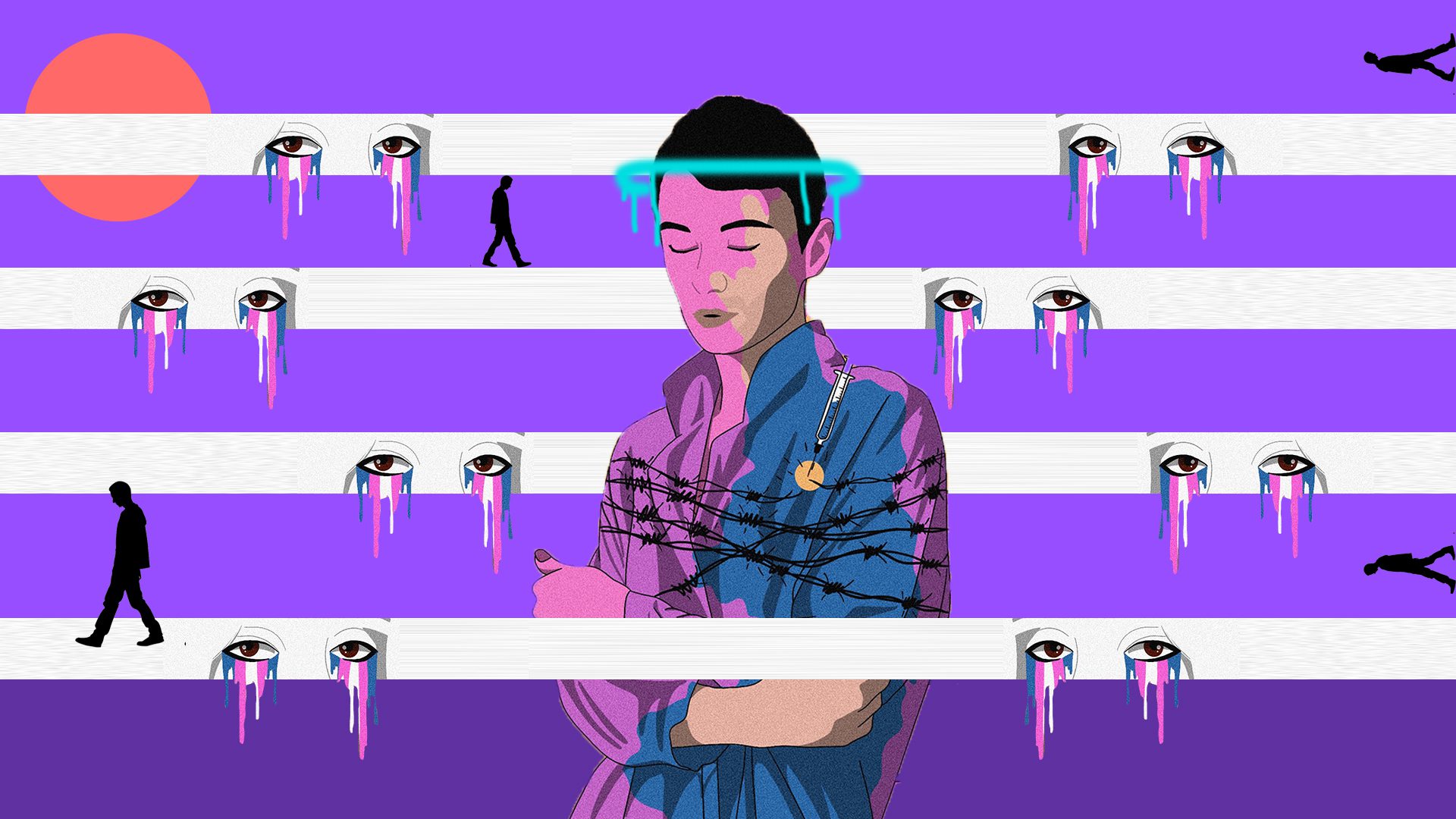

“She Brought a Fatwa from Khamenei and Al-Azhar, But It Went Nowhere”: The Struggles of Trans People in the Iraqi Health Sector
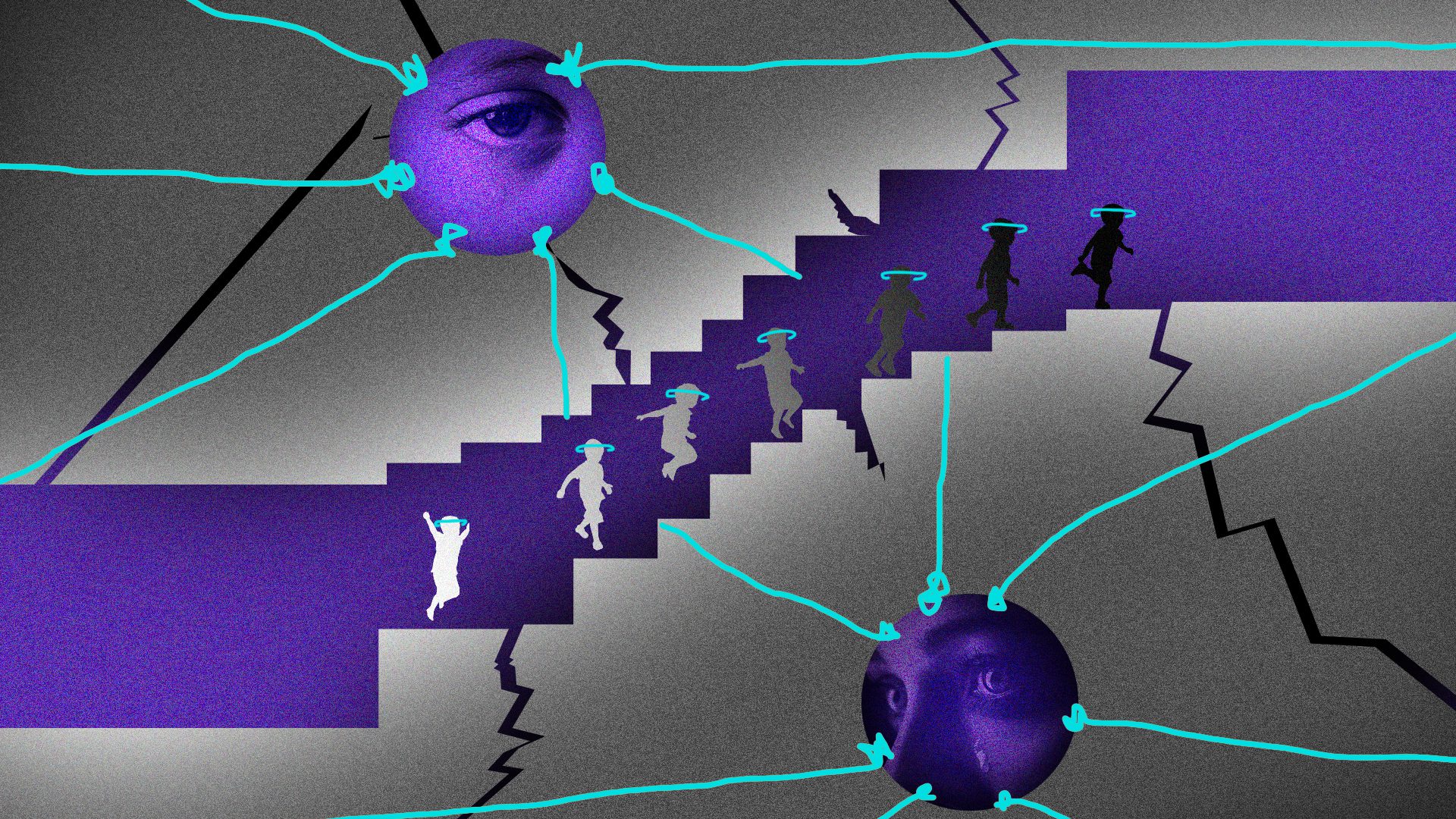

“Everyone has a Right to the Kids Except their Mother”: On Women Fighting for the Custody of Their Children
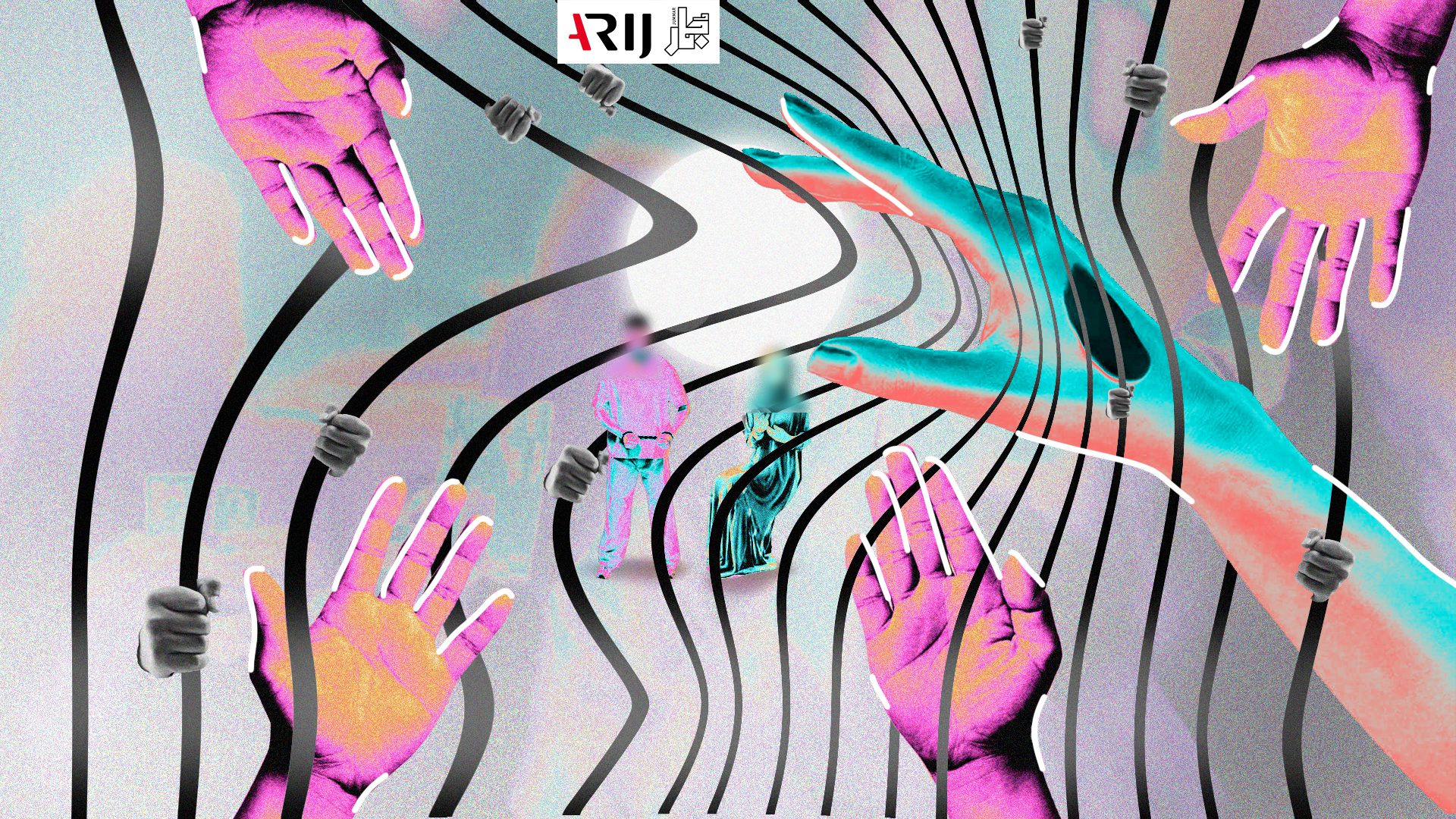

Iraqi Prisoners Blackmailed to Pay To Obtain Release Papers After Completing Their Sentence
In March 2023, shots rang out in the desert of Al-Muthanna in a fight between two tribes over land containing groundwater. One person was killed, and five others were injured. The dispute was resolved after the killer’s family paid a Diyah [Arabic for blood money] of 130 million dinars, which equals around ninety-thousand dollars. However, the roots of the dispute remain.
Last February, Al-Muthanna police were attacked with stones by members of the tribe while guarding a blight-violation removal campaign on Al-Rumaitha River, east of the governorate. The attack led to more than ten security personnel being injured.
These conflicts clearly indicate the deepening water crisis in Iraq and its impact on civil peace. However, the crisis of Al-Muthanna is further accentuated as the governorate suffers acutely from very scarce water resources, which has made its authorities and people resort to groundwater wells. Dozens of wells are being drilled every month, and the authorities’ excavators are racing with the shovels of individuals to reach the precious underground resource.
Geographical statistics indicate that the groundwater storage in Al-Muthanna desert exceeds sixteen billion cubic metres, equivalent to Shatt Al-Arab’s water drainage.

Water-recovery irrigation or displacement
While searching for water, many tribes get involved in armed conflicts.
Lands that depend on groundwater are now many times more than those irrigated by surface water. The number of dunams (1000 square metres) of land irrigated by surface water only amount to sixty-six thousand, while about 291 thousand dunums rely on the desert’s groundwater.


The size of cultivated land in Al-Muthanna Governorate in 2023 is around 357 thousand dunums. “We cultivated only 60,000 dunums in 2022, but thanks to groundwater, the number jumped to 360,000 dunums this year”, the Head of Al-Muthanna Agriculture Directorate, Amer Jabbar, told Jummar.
Extracted groundwater was used to cultivate 300,000 dunums of land and fill it with crops. However, other land remains degraded, and its people face the threat of displacement.
Farmland left to its fate
The Directorate of Agriculture determines land in the east and north of Al-Muthanna most affected by the water crisis. Farmers of these areas were denied water-recovery irrigation, a method by which arable land is flooded with water when it lies close to rivers or their tributaries branches.
In the districts near Al-Rumaitha River, such as Al-Najmi, Al-Warka, Al-Rumaitha, and Nahiyah Al-Sawir, people experienced the drying up of their river. Some were forced to abandon their lands and homes to search for a new water-secure location. “There are 4,334 farmers in different regions, and most of them have been affected by the reduction of the agricultural plan”, according to Amer Jabbar, Head of Al-Muthanna Agriculture Directorate.


Iraqi provinces reduce their agricultural plans each year as the water shortage worsens. Al-Muthanna Agriculture Directorate attributes water scarcity to the lack of water imports from the neighbouring province of Diwaniyah, especially on Al-Rumaitha and the Euphrates riverbanks, the main water sources for Al-Muthanna’s agriculture.
“Transgressions are committed on the river as it transits through Diwaniyah from Babel. We sent several official letters requesting the setting up of a monitoring point between Al-Muthanna and Diwaniyah to prevent transgressions, but to little avail”, said Haidar Abdul-Kazim, Officer of the central water projects in Al-Muthanna.



Water scarcity forced the governorate to stop cultivating crops for an entire season, as happened last summer when the planting of amber rice stopped in areas of Al-Warkaa district, which amounts to ten thousand dunums.
Civil peace is threatened
The local government in Al-Muthanna expects more tribal conflicts to take place over water. “Clashes erupted between the tribes and security forces during the previous agricultural season in the Aal Shweija region in Al-Warkaa district”, said Abdul-Wahhab Al-Yasiri, Advisor to Al-Muthanna governor for agricultural affairs and water resources.
In October 2022, members of the Aal Shweija tribe attacked security forces and water resources department employees while they were trying to prevent transgressions on the rivers in Al-Warkaa district.



Water scarcity in Al-Muthanna prompted the local authorities to turn to the desert and cultivate it using groundwater, which many opposed due to excessive water depletion. Groundwater has been used to cultivate over 300,000 dunums by irrigation, raising fears of excessive water depletion and creating a burden on the region’s reserves for future generations.
There are conflicting numbers regarding groundwater reserves between the governorate’s agricultural and water departments. However, neither of them has accurate official statistics on the matter.
Specialised authorities face challenges in determining the desert’s groundwater reserves, as they do not have data for the depleted groundwater. Generally, they have recorded significant depletion and indications of a decrease in groundwater levels in recent years in areas called “areas of depletion”, especially in Al-Samawah Saltern and other lands using irrigation in the desert.
On the other hand, there are increasing demands to support farmers by granting them particular loans to buy modern irrigation machines to cultivate their land and control water depletion. According to the local agricultural authorities, this is due to the high prices of these machines, such as sprinklers, with costs exceeding sixty million Iraqi dinars (around forty-two thousand dollars).
One well after another
Naturally, drought forces people to find different ways to access water. The most popular way in Al-Muthanna is digging wells. Last year, the Groundwater Authority in Al-Muthanna registered more than 800 unlicensed drilled wells. These wells are believed to delve below the level of groundwater, as they are not regulated by the land’s water requirements and are being dug to great depths, which damages the land. However, the authority granted exemptions to the wells’ owners and licensed the wells without backfilling them.
Environmental officials expect the number of wells in the desert to be around three thousand, distributed horizontally, on the groundwater storage line of the Dammam aquifer, which is shared between Saudi Arabia and Iraq and feeds the channels of Sawa Lake.



The situation changed after 2003, when transgressors began drilling desert land, draining its water, and violating the desert laws. Before 2003, digging was prohibited unless it was for the public benefit of nomadic Bedouins or specific farmers who obtained official licences based on longitudinal geological studies of the soil, groundwater storage, layers of the earth, depth calculations, and the amount of water needed for the desired purpose.
According to Abdul-Amir Al-Aboudi, a researcher in the History and Ecology of Al-Muthanna Desert, the first official drilling of groundwater wells began in 1953 by a Yugoslav company contracted by the Iraqi government. These wells were named the “public benefit wells” and were drilled for sheep farmers and Bedouins. There were 120 wells, mostly close to their pastures, and the distance between each one ranged from fifteen to twenty kilometres, that is the distance Bedouins travel on foot between each trip, after which they camp and rest. Another thirty-five wells were dug near the borders, exclusively for the police and border guards, and they had specialised employees to operate and repair them if damaged.
In 2013, the government attempted to repeat the initiative and drilled fifty-four wells for the public good to settle nomadic Bedouins. Still, it failed because the wells’ employees abandoned their work as they had no special department to pay their dues, and their salaries were discontinued, forcing them to leave. The government then pulled out the well pumps to avoid them being stolen or buried.
Al-Aboudi says that uncontrolled arbitrary drilling of wells occurred in the desert after 2003, which caused adverse environmental repercussions from the penetration of geological strata, such as environmental pollution, waste of the desert’s water reserves, burning of soil cavities, and freshwater mixing with sulphurous water. This is because every geological layer contains a certain quality of water, especially in desert land.



The unique lake is drying up
For thousands of years, the Sawa Lake in Al-Muthanna desert was unique as it did not get its water from rivers but depended on groundwater through a spring in the lakebed. However, after the uncontrolled drilling of wells nearby, the lake diminished, and its water level decreased to complete dryness, except for its spring. The remaining spring allowed the Marine Science Centre team of the University of Basra and other teams from Al-Muthanna and Baghdad to conduct tests on its water and rocks. The tests proved the lake is connected to the Dammam aquifer, as its sulphurous water matched that of the aquifer.
“The Sawa Lake has dried up due to the depletion of water by Al-Samawah Saltern, a salt extraction plant and nearby cement plants, in addition to the unauthorised horizontal expansion of agricultural land in the desert and its impact on groundwater”, said Dr Sophia Jabbar, Director of Al-Badia [Arabic for desert] and Sawa Lake Studies Centre at Al-Muthanna University. The Environment Directorate of Al-Muthanna confirmed Jabbar’s evaluation.
The drying up of Sawa Lake raised the alarm about the future of water in the governorate, which suffers from a massive shortage of surface water. Studies corroborated, that the future of groundwater would be similar to that of surface water if it continues to be arbitrarily drained.
Jabbar stresses the need to regulate agricultural investment through laws that consider environmental impacts in order to preserve groundwater.
Al-Samawah Saltern, which is close to Sawa Lake, possesses more than nineteen wells of its own, and it is one of the main reasons behind the lake drying up as groundwater does not reach its spring.
Distortions and tremors
Sawa Lake is a resting station for birds migrating from east to west, and home to a rare diversity of exotic fish that cannot be cooked as they melt rapidly. Meanwhile, Al-Muthanna desert is a fertile environment for various rare plants, most of which have become extinct during the last twenty years due to human intervention, water depletion, the neglect of public benefit wells that provide the land with water, climate change, and the lack of rainfall in the area.
Dr Latif Kamel, Head of the Geography Department at Al-Muthanna University, says that some studies attributed the drying up of Sawa Lake to industrial and agricultural activities. “The biggest problem is that the economic mindset in the governorate aspires to make profit without sustainable development”, Kamel told Jummar.
The excessive depletion of the desert’s water affects the volume of groundwater and the internal tectonic environment, which can cause distortions in the earth’s formation when exposed to imbalances. Kamel expects that continuing excessive drilling at great depths will expose the region to frequent earthquakes in the future.
Sawa Lake’s inclusion in the International Ramsar Convention did not save its biodiversity or preserve it as a resting station for migratory birds. Youssef Sawadi, Director of the Environment Department in Al-Muthanna, talks about the lake losing its biological diversity, “The lake has lost many of its creatures, especially the small fish called mosquitofish and walleye. These fish are only found in Sawa Lake, and have now disappeared because of drought”, Sawadi told Jummar.
The water harvesting project
The desert of Al-Muthanna can be subject to heavy waves of torrential downpours annually due to its low geographical position whereby it collects rainwater from Najaf, the Saudi border, Basra, Jordan, and Syria. However, this water floods towards the rivers and evaporates without being used.
This year, the governorate witnessed the most severe wave of torrential rain, which swept over the main strategic road for oil transport vehicles. Meanwhile, the governorate’s water authority steered these floods towards Shatt Al-Atshan (a tributary of the Euphrates River) to curb them. The tributary then dried up in early May.



In 2018, the governorate’s Directorate of Planning presented a special project to utilise rain and flood water in the desert. The project was called the Water Harvesting Project, but it remained merely ink on paper and was not implemented by the relevant authorities.
Engineer Qabil Hammoud, Planning Director of Al-Muthanna, says that the project includes forty-three surface dams to utilise flood water and reserve it through earthen, stone, or concrete dams in locations where water is to be collected and transferred underground to help protect against climate change and drought.
The Directorate of Planning in Al-Muthanna holds the Ministry of Water Resources responsible for neither implementing the project to utilise flood waters in facing the major drought crisis in the governorate, nor providing water reservoirs in those areas, especially with farmers cultivating the desert, which decreases groundwater reserves significantly.
“Despite our sending of many letters, the Ministry of Water Resources showed indifference and failed in the water harvesting file”, Hammoud told Jummar.
Mass migration
Many farmers in Al-Muthanna say that agriculture is no longer feasible for them as they are prevented from cultivating their land due to the drought crisis. This has turned it into undeveloped farmland that generates no income, forcing most farmers to convert their land into residential areas.
Meanwhile, the local government confirms that residents of the northeastern regions of Al-Muthanna, who make up sixty per cent of the governorate’s total population, have stopped farming. However, it does not have accurate statistics on the number of families that have migrated and left their agricultural land.



Lazim Huwaidi Al-Toubi, a farmer and elder of the Aal Touba tribe, is one of the thousands in Al-Muthanna who have been deprived of cultivating their land due to water scarcity. Al-Toubi owns 4,000 dunums that used to provide a rich harvest of vegetables but have ceased to be cultivated in the last three years because of what he describes as the “unfair decision” of preventing agriculture.
“From the Aal Ghanim tribe’s borders to that of the Al-Jawaber tribe, agriculture has ceased. We are stopped whenever we intend to farm due to the lack of water”, Al-Toubi told Jummar.
This reality has forced about 500 families from Aal Touba to migrate towards Karbala and Khan Al-Nuss in Najaf in search of work in agriculture. Despite the migration of families in the governorate’s north and eastern regions, the local authority has not taken any measures to solve the water crisis, which threatens to accelerate migration until the countryside has no inhabitants left at all or it will increase the risk of tribal conflicts over the rivers’ remaining water that authorities are trying to allocate for drinking only.
*This article is supported by the Check Global Program – Meedan Foundation.
